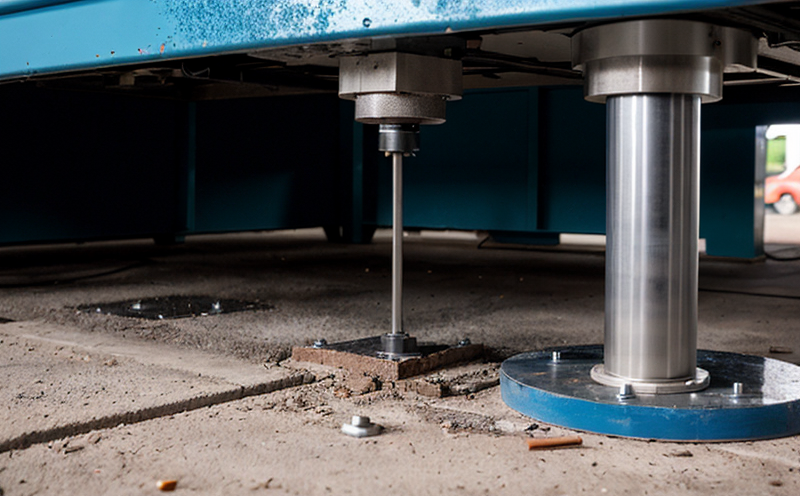ISO 6721 Dynamic Mechanical Properties and Stress Relaxation Testing
The ISO 6721 series of standards provides a comprehensive framework for testing materials under dynamic mechanical conditions. This section focuses on the specific test outlined in ISO 6721, which involves assessing both dynamic mechanical properties and stress relaxation behavior.
Dynamic mechanical properties encompass the ability of a material to undergo elastic deformation when subjected to alternating stresses or strains, as well as its capacity for energy absorption during these processes. Stress relaxation testing evaluates how much a specimen's internal stresses decrease over time under constant load. This information is critical in additive manufacturing and 3D printing, where residual stress management plays a pivotal role.
In the context of additive manufacturing (AM), ISO 6721 helps ensure that parts produced using AM techniques meet stringent quality standards by providing insights into their mechanical performance under dynamic loading conditions. For instance, it can reveal whether a part will maintain its structural integrity during cyclic loading or withstand high-frequency vibrations without failure.
The test involves subjecting specimens to controlled temperature and frequency sweeps while monitoring their viscoelastic behavior. Specimens are typically cylindrical in shape but may vary based on the specific requirements of the project. A key aspect is ensuring that the material's response accurately reflects real-world scenarios, such as those encountered during 3D printing or post-processing heat treatments.
Specimen preparation plays a crucial role; it involves selecting appropriate geometries and dimensions to simulate realistic loading conditions. Post-test analysis focuses on extracting meaningful data from raw measurements, which includes fitting viscoelastic models to the acquired experimental curves. Reporting standards ensure that all relevant parameters are captured accurately, allowing for consistent interpretation across different laboratories.
The importance of this test cannot be overstated, especially given its direct impact on product reliability and safety in industries relying heavily on advanced manufacturing technologies like 3D printing. By providing detailed information about a material’s dynamic mechanical properties, ISO 6721 enables informed decision-making throughout the design lifecycle—from initial concept through final production validation.
| Standard Number | Title |
|---|---|
| ISO 6721-1 | Determination of viscoelastic properties by mechanical oscillatory methods |
| ISO 6721-2 | Determination of stress relaxation and creep at constant strain or stress |
Why It Matters
Understanding dynamic mechanical properties is essential for predicting how a material will behave under varying conditions, particularly in additive manufacturing processes. This knowledge allows engineers to optimize printing parameters and post-processing treatments, ensuring that parts possess optimal strength-to-weight ratios while minimizing risk of failure due to fatigue or creep.
Stress relaxation testing complements this by providing insight into the long-term stability of materials used in high-stress environments. For additive manufacturing applications, especially those involving metals or composites, accurate stress relaxation data can inform decisions regarding heat treatment schedules and cooling protocols, ultimately leading to more robust end products.
The ability to perform these tests under controlled laboratory conditions enables manufacturers to replicate real-world usage scenarios accurately, thereby enhancing the accuracy of predictive modeling efforts. Such models are vital for optimizing designs early in the development process, reducing costs associated with prototype iterations and potential failures post-launch.
Applied Standards
- ISO 6721-1: Covers the determination of viscoelastic properties by mechanical oscillatory methods, essential for understanding how materials respond to dynamic loads.
- ISO 6721-2: Focuses on stress relaxation and creep at constant strain or stress conditions, critical for assessing material stability over time.
Why Choose This Test
- Provides insights into a material’s viscoelastic behavior under dynamic loading conditions relevant to additive manufacturing processes.
- Offers data on stress relaxation rates, crucial for evaluating the long-term performance of materials in high-stress applications.
- Aids in optimizing printing parameters and post-processing treatments through precise control over environmental factors like temperature and cooling rate.
- Serves as a valuable tool in predictive modeling efforts, supporting informed design decisions from concept to launch.
- Ensures compliance with international standards, enhancing the credibility of test results for regulatory approval processes.
- Promotes consistency across different laboratories by adhering strictly to internationally recognized protocols and procedures.





